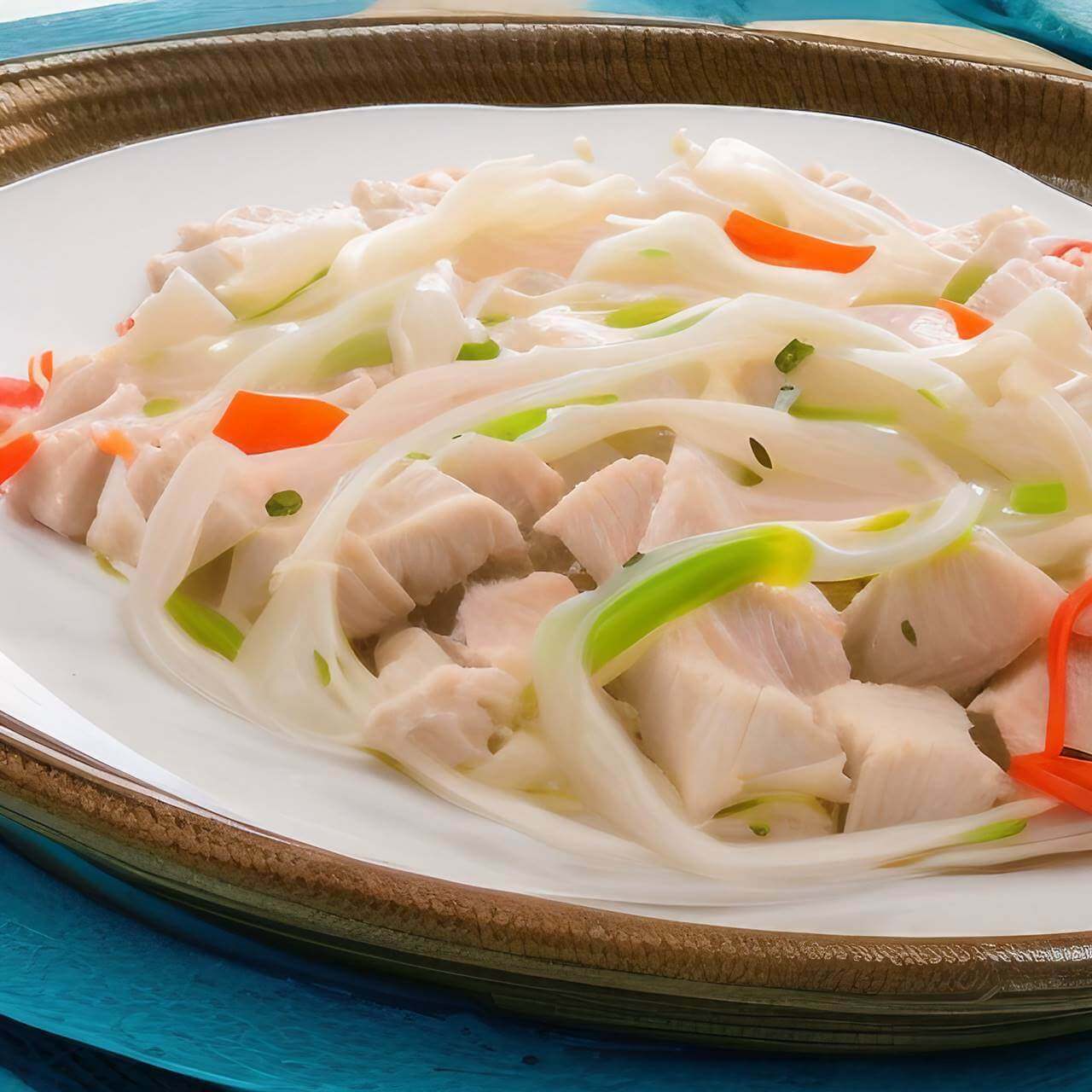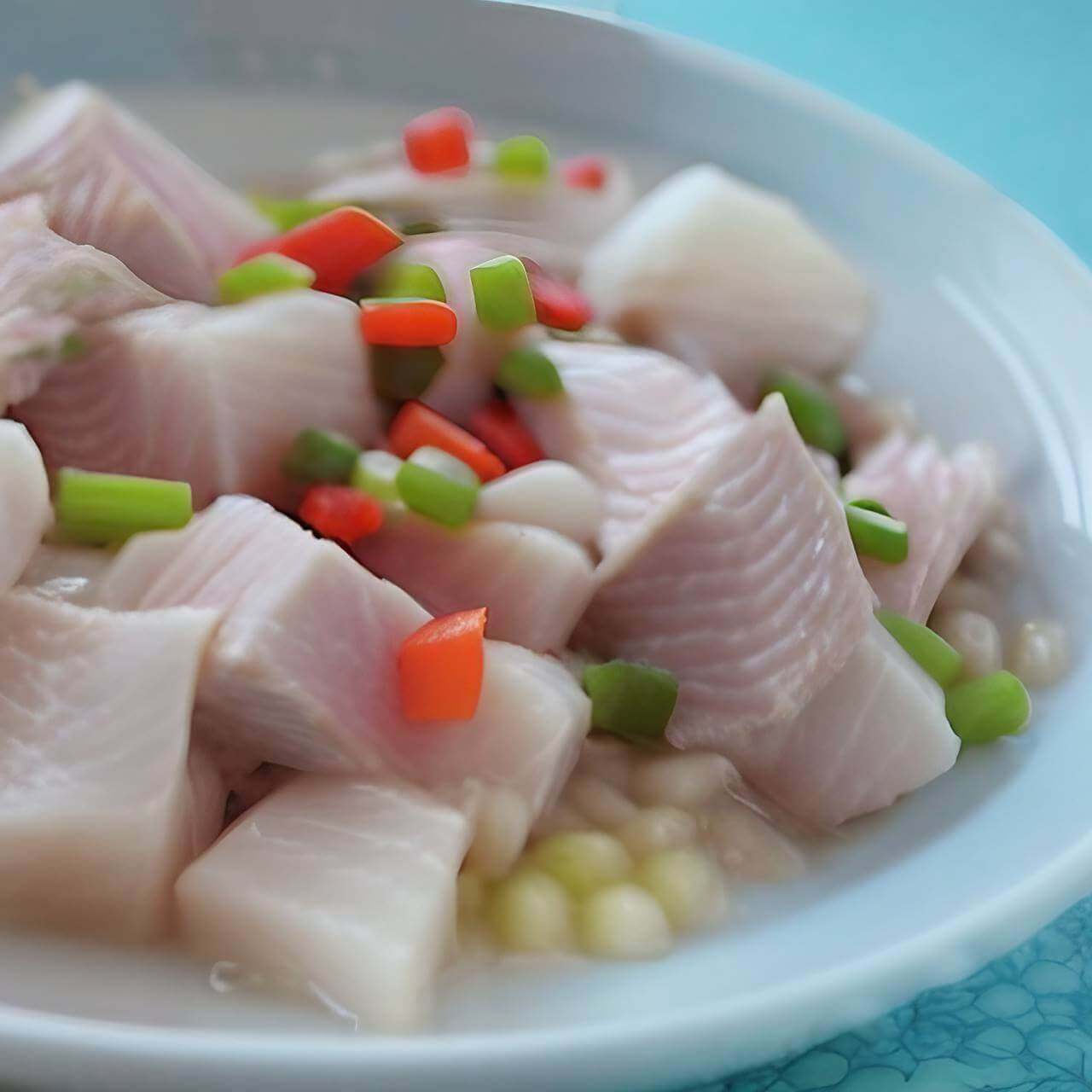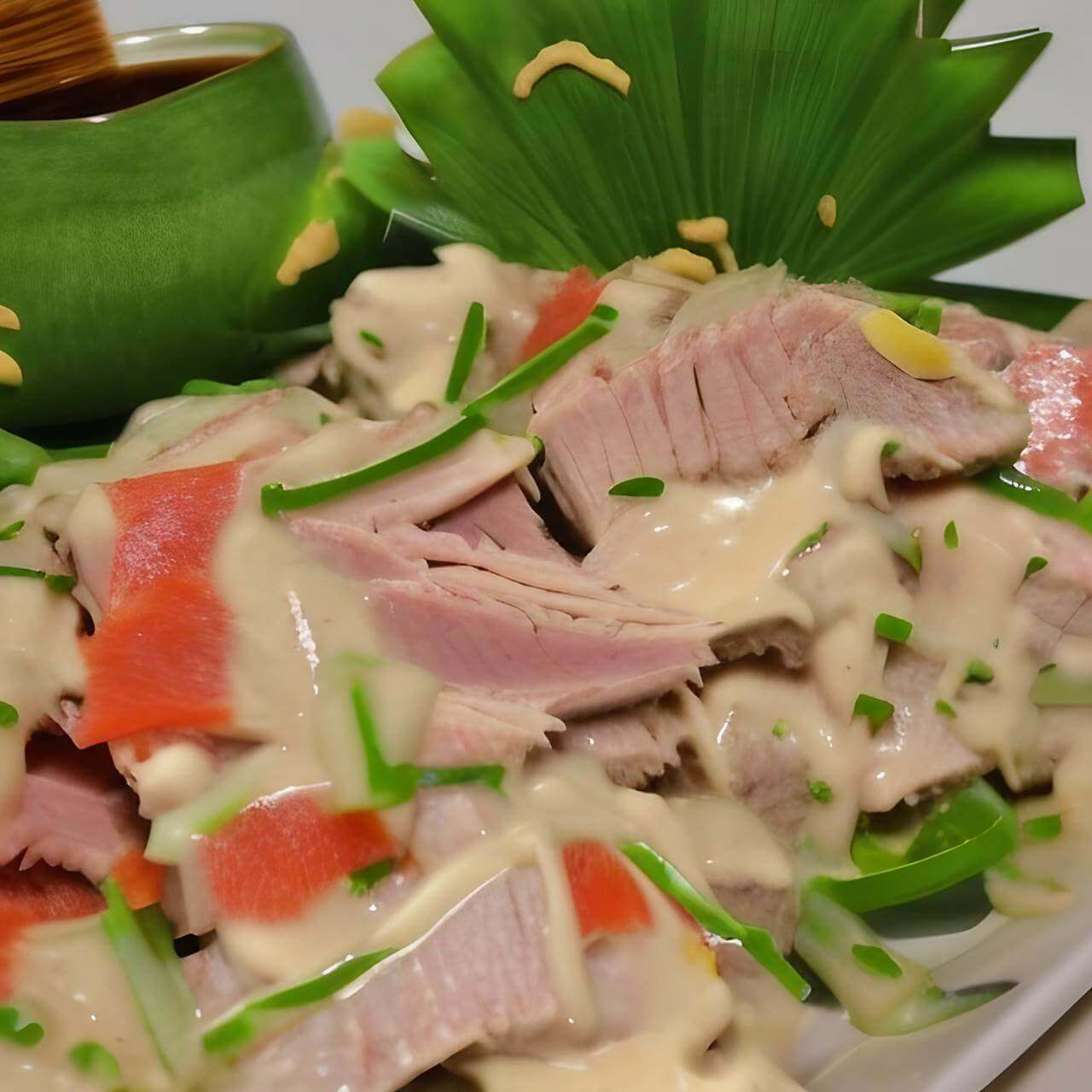Kinilaw na Tuna, also known as raw fish salad, is a delectable appetizer that pairs perfectly with an ice-cold beer. Enjoy this delightful dish as you “pulutan” and get the party started! This recipe requires no cooking effort, yet yields semi-cooked tuna meat once served. How is this possible? By utilizing the mild acids found in vinegar (acetic acid) and calamansi or lemon juice (citric acid), which slowly cook the fish when it’s soaked for several hours!
If you’re looking for an uncomplicated, stress-free Tuna Kilawin dish that doesn’t require too many ingredients, then this Easy Tuna Kilawin Recipe is your best bet. Preparing it is incredibly easy and the result will be a delicious meal! This Tuna Kilawin Recipe calls for lemon, but feel free to use calamansi or lime as delicious substitutes!
Also Read: How to Cook Filipino Bicol Express
This recipe has become widely popular in coastal areas with access to delicious, fresh seafood. The key is the use of only the finest tuna slices and white fish meat, as they yield optimal results when used for this dish! If you are using not-so-fresh fish meat, a sour taste may develop in the mixture – along with an irritating sensation on your tongue and mouth. This is because acid does not cook fish meat as thoroughly as frying or steaming would.
Knowing the exact balance of fish and citrus juice, as well as giving it enough time to cure, are fundamental for producing an exquisite tuna kilawin. For perfect results, we should marinate the fish in citrus juice and leave it to rest in the fridge for at least three hours – or overnight if you want a more intense flavor. Moreover, when served cold this dish will remain fresh and provide an enjoyable eating experience.
When I’m looking for a refreshing start to my meal, there’s nothing that pairs better with an ice-cold beer than a semi-cooked sour fish appetizer. It has all the deliciousness of Ceviche (a marinated dish traditionally made with citric acid) and more – it’s guaranteed to awaken your taste buds!

Ingredients
- cube two pounds of tuna that have already been skinned and deboned.
- One and a half cups of vinegar
- For a sweet, spicy kick, add 3 tablespoons of minced ginger to your dish.
- Mince 1 large, vibrant red onion for your dish.
- Add two teaspoons of salt to your dish for a burst of flavor.
- For the perfect flavor, add 1 teaspoon of freshly ground black pepper.
- For a delicious and tart flavoring, add 1/2 cup of freshly squeezed lemon or calamansi juice.
- For an extra touch of heat, add 1-2 tablespoons of finely chopped red chillies.
What Other Types of Fish can you use for Your Fish Kinilaw?
Kinilaw recipes can differ depending on the type of seafood used, but usually include various types of fish like Tanigue (Spanish mackerel) or Tambakol (yellowfin tuna). These two varieties are by far the most popular when making this traditional Filipino dish.
For an exciting experience, you can also experiment with other firmer fishes such as marlin, tulingan (mackerel tuna), labahita (black surgeonfish), lapu-lapu (miniata grouper) and mahi-mahi (dolphinfish). Or why not try some squid, shrimp, crabs or even oysters and clams? All these seafood options are just perfect for making kinilaw.
Steps to Cook Tuna Fish Kinilaw
- Carefully deposit the cubed tuna in a substantial bowl, then add 3/4 cups of vinegar to it.
- Allow the tuna to sit for two minutes, then use a spoon to apply gentle pressure to squeeze out any excess liquid.
- To eliminate the fishy odor, delicately clean the tuna with vinegar. Make sure to rinse off all of it from the meat before you move on to further steps.
- To complete the dish, mix in 3/4 cup of vinegar (or substitute with calamansi or lemon juice), a teaspoon of ginger, some salt and ground black pepper to taste, and several red chillies. Stir everything together until it is blended thoroughly.
- After covering the bowl, place it in the refrigerator for at least two hours to allow flavors to fully develop.
- For a flavorful finishing touch, top with minced red onions and serve. If desired, you can also add red onions when mixing the other ingredients in step four.
- Share and enjoy!
What is the Difference Between a Kinilaw and Ceviche?
Generally referred to as a Filipino-style ceviche, this dish is characterized by its use of fresh raw fish or seafood. Once you’ve tasted both Kinilaw and Ceviche, the distinction is obvious. Not only do they prepare ingredients differently – while ceviche uses citrus-based marinade, Kinilaw includes vinegar in its recipe – but their flavors are markedly different as well. The first dish typically boasts the addition of ginger and calamansi while its counterpart commonly features cilantro and lime as ingredients.

Tips
- Optimal for this dish is fresh tuna, due to its thick and succulent texture. If that’s not possible, maya-maya or Red Snapper fillet serves as a great alternative.
- In choosing Tuna, make sure to avoid those with a mealy texture, as they tend to be lower in quality. Make sure that the color of the tuna is vibrant and its smell is pleasant.
- If you have leftovers, store them in an airtight container for up to two days. As long as tuna has been cooked properly and is stored at a safe temperature, it can safely be consumed within this time frame. Just make sure to give the dish enough time to cure before eating it!
- When served, the tuna kinilaw should have a bright orange-red colour. This is because of the citrus acid causing the pigments in the fish meat to change – creating that appetizing visual effect. If you want it even brighter, you can add a teaspoon of paprika or chilli powder for an extra zing. The texture should be slightly firm and tender, yet succulent – with the acidity from the citrus juice providing a tangy sensation on your tongue and mouth. This is because acid does not cook fish meat as thoroughly as frying or steaming would.
- Always remember to select the freshest fish or seafood if you’re planning on eating it raw, as uncooked items will not have been heated. This guarantees that you get the best flavor and texture from your kinilaw and ensures that it’s safe to eat. Enjoy your kinilaw, made with love!
Frequently Asked Questions
1. What is the difference between Kinilaw and Ceviche?
Generally referred to as a Filipino-style ceviche, Kinilaw is characterized by its use of fresh raw fish or seafood. Once you’ve tasted both dishes, the distinction is obvious. Not only do they prepare ingredients differently – while ceviche uses citrus-based marinade, Kinilaw includes vinegar in its recipe – but their flavors are markedly different as well. The first dish typically boasts the addition of ginger and calamansi while its counterpart commonly features cilantro and lime as ingredients.
2. What is the best type of fish to use for Kinilaw?
Optimal for this dish is fresh tuna, due to its thick and succulent texture. If that’s not possible, maya-maya or Red Snapper fillet serves as a great alternative. In choosing Tuna, make sure to avoid those with a mealy texture, as they tend to be lower in quality. Make sure that the color of the tuna is vibrant and its smell is pleasant.
3. How long can I store Kinilaw in the refrigerator?
If you have leftovers, store them in an airtight container for up to two days. As long as tuna has been cooked properly and is stored at a safe temperature, it can safely be consumed within this time frame. Just make sure to give the dish enough time to cure before eating it!
4. What should the texture of Kinilaw be like?
When served, the tuna kinilaw should have a bright orange-red colour. This is because of the citrus acid causing the pigments in the fish meat to change – creating that appetizing visual effect. If you want it even brighter, you can add a teaspoon of paprika or chilli powder for an extra zing. The texture should be slightly firm and tender, yet succulent – with the acidity from the citrus juice providing a tangy sensation on your tongue and mouth. This is because acid does not cook fish meat as thoroughly as frying or steaming would. Enjoy your kinilaw, made with love!
5. Is it safe to eat Kinilaw?
Always remember to select the freshest fish or seafood if you’re planning on eating it raw, as uncooked items will not have been heated. This guarantees that you get the best flavor and texture from your kinilaw and ensures that it’s safe to eat. Enjoy your kinilaw, made with love!
6. How should I serve Kinilaw?
Serve your kinilaw on a plate surrounded by fresh fruits and vegetables like tomatoes, onions, cucumber or avocado. You can also pair it with a side of white rice, fried bananas or crackers for added texture and flavor. Top it off with your favorite Kinilaw dressing such as calamansi juice, soy sauce, Tabasco or Worcestershire sauce for an extra zing!

Summary
Kinilaw is a delicious Filipino-style ceviche made with fresh raw fish or seafood. When preparing this dish, be sure to select the freshest tuna that has a thick and succulent texture for optimal results. Make sure it is stored in an airtight container in the refrigerator for up to two days if you have leftovers. Serve your kinilaw on a plate surrounded by fruits and vegetables or with white rice and fried bananas as sides. Finally, top off your dish with calamansi juice, soy sauce or Tabasco sauce for an extra zing! With these tips in mind, enjoy making (and eating!) your own version of Kinilaw at home today!